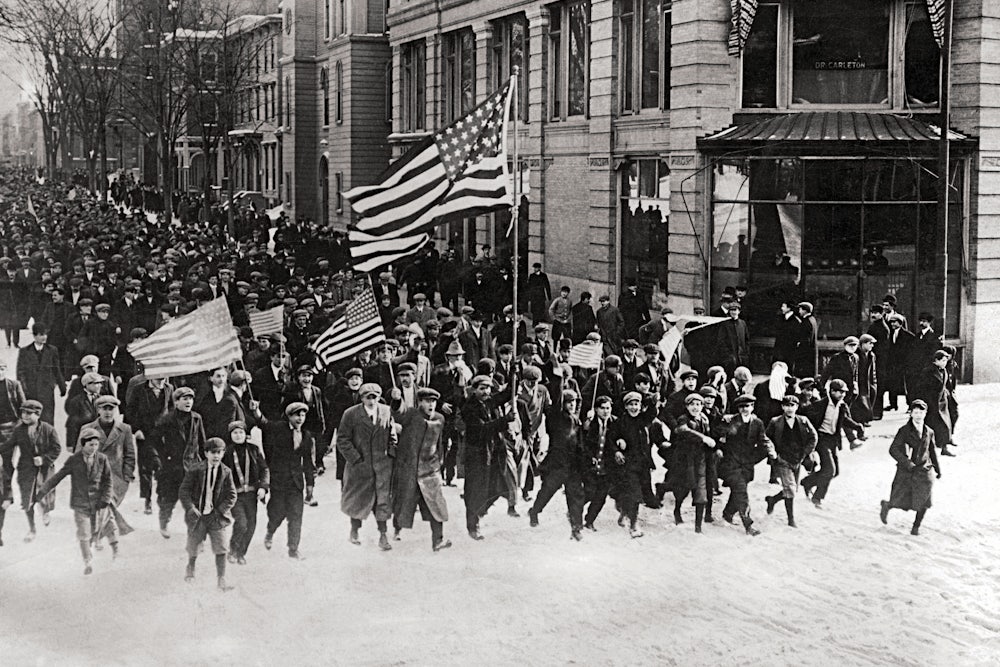What distinguishes a progressive from a liberal? This is one of the more pervasive ambiguities in contemporary American political discourse.
In a recent issue of the journal Democracy, the historian Sean Wilentz addressed it head-on: Liberals, he argues, recognize the flaws of capitalism, are dedicated to remedying them, and have great achievements to their credit in that regard, notably those of the New Deal, the New Frontier, and the Great Society. Progressives are meanwhile “emphatically anti-liberal”—because they are hostile to capitalism and, “deep down, harbor the hope that one day, perhaps through some catastrophic event, American capitalism will indeed be replaced by socialism.”
But here’s the problem: The progressives Wilentz describes aren’t really advocates for socialism in its authentic sense of total “public ownership of finance, industry, and agriculture.” Rather, he writes, they claim for socialism (“democratic socialism,” of course) the social-welfare achievements of American liberalism and Scandinavian social democracy, while rejecting the full architecture of those ideologies.
In practice, however, Wilentz’s theory doesn’t really apply: Progressive and liberal are precisely synonyms in American political life—and have been since the 1980s, when Ronald Reagan succeeded in making liberals feel ashamed of the word and fearful of associating with it, and they started calling themselves progressives instead. This wasn’t the introduction of a new politics; it was the rebranding of an existing one.
The only way to find a meaningful usage of progressive is to go back to when it first came into political currency. In his marvelously succinct book Progressivism: A Very Short Introduction, the historian Walter Nugent offers a clear view of what the word denoted then: “The consistent conviction of virtually all Progressives was that a ‘public interest’ or ‘common good’ really existed.... Progressives agreed ... that a common good affected everyone and should be sought in every available way. In this, their outlook contrasted with the rampant individualism and self-seeking that preceded them in the Gilded Age and that returned in the 1920s (and in the 1990s and 2000s, which has been called ‘the second Gilded Age’).”
Now, the “public interest” and the “common good” were of course not themselves new concepts in U.S. political thought; indeed, they were key aspects of the civic republican political thought that animated the American Founders. The basic concept of freedom in republican theory differs substantially from the liberal concept: Liberal theory, more familiar to us today, emphasizes the ability of the individual to make his or her own choices about how to live, without undue interference from either the government or fellow citizens. Civic republican theory, by contrast, defines freedom in terms of self-government, which involves full citizen participation in the affairs of the community and the ongoing process of determining the community’s collective destiny.
One of the tenets of early American civic republicanism was that acting publicly on behalf of the community required individual economic independence. But as the country underwent rapid industrialization after the Civil War, Americans were wrenched all around the country from smaller communities, where the practice of town-hall self-government had been practicable, and thrust into the “wage-slavery” of the factory system, forced to live in large, crowded, anonymous, poverty-stricken cities. The Progressives of the early twentieth century made efforts to reintroduce civic republican liberty by ameliorating the growing income inequality of the era (e.g., the progressive income tax), creating new forms of direct democracy (e.g., the ballot initiative and the referendum), and making life in urban areas more communal (e.g., public parks and playgrounds). Industrial capitalism, meanwhile, posed a challenge not only to republican principles but to liberal principles too. The Progressive agenda rose to that challenge as well, including an effort to update liberalism by attempting to support the traditional “negative rights” represented in the first ten amendments to the Constitution with a set of “positive rights”: Progressives argued that without a living wage, adequate housing, effective health care, and basic education, the traditional negative rights had no real substance.
As the political scientist Michael Sandel has pointed out, however, such positive rights are inherently on fragile ground unless they have the support of a strong community consensus, which in a modern liberal society can be achieved only through a civic republican politics. The defining theorists of the Progressive era understood this. Perhaps the most philosophically ambitious among them was John Dewey, who synthesized the liberal and civic republican traditions by way of a new concept of democracy itself: Democracy is not, Dewey argued, merely a mechanism for majority rule; it’s an ongoing deliberative process through which bearers of individual rights address issues facing their political community as a whole and chart its future together. He redefined, in other words, the “negative rights” of liberalism and the “positive rights” of civic republicanism as mutual necessities.
Liberals who describe themselves as progressives are accordingly half right. But for progressive to be truly meaningful again, it has to be more than a synonym for liberal; it has to recapture the civic republican heart of the original Progressive movement—etymologically and in practice.
